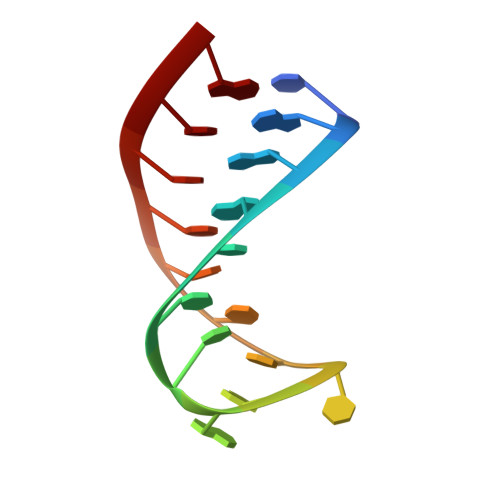Structure Determination of the Top-Loop of the Conserved 3'-Terminal Secondary Structure in the Genome of Flaviviruses.
Lescrinier, E., Dyubankova, N., Nauwelaerts, K., Jones, R., Herdewijn, P.(2010) Chembiochem 11: 1404-1412
- PubMed: 20540055
- DOI: https://doi.org/10.1002/cbic.200900765
- Primary Citation of Related Structures:
2KPC, 2KPD - PubMed Abstract:
To what extent small differences in RNA sequences (mutations) can have a profound impact on biology remains an intriguing question. This effect can be studied by using untranslated RNA regions as a model. We have studied the influence of mutations on the structure of an RNA hairpin that occurs in the 3'-untranslated region (UTR) of Flaviviridae, and is known to have a large impact on the vector dependency of flaviviruses. Three related RNA sequences were studied by NMR spectroscopy. The selected sequences represent each one of the three clusters in the flavivirus genes (mosquito-borne, tick-borne, and no-known-vector viruses). A new strategy was used to obtain chemical shift signatures of carbonyl atoms in unlabeled uridine nucleobases to characterize their involvement in hydrogen bonding. Clear differences occur in the structures and stacking pattern of the three RNA hairpins. The observed differences cannot be predicted based on sequence analysis. A different biology can be correlated with a different RNA tertiary structure. The underlying biological mechanism, however, remains to be studied.
- Rega Institute for Medical Research, Katholieke Universiteit Leuven, Minderbroedersstraat 10, 3000 Leuven, Belgium.
Organizational Affiliation:
















